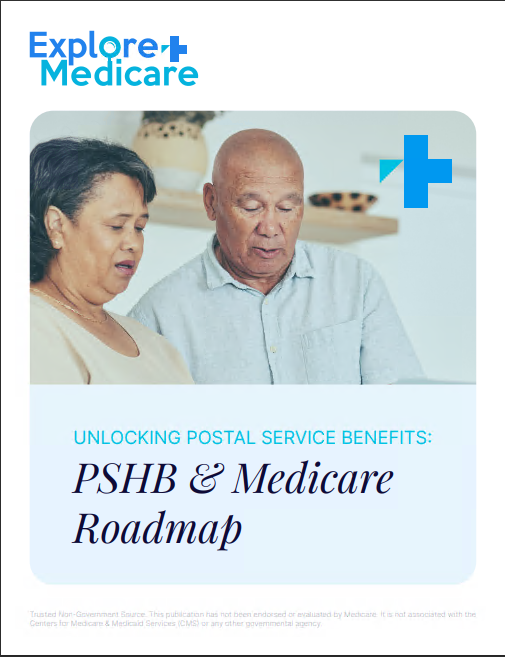Key Takeaways
-
Planning for Medicare in 2025 means asking the right questions well before your 65th birthday—not just focusing on eligibility age.
-
Your decisions around timing, coverage types, and supplemental options can significantly impact your long-term financial security and access to care.
The Starting Point Isn’t Age—It’s Understanding
Medicare eligibility begins at age 65 for most Americans. But planning effectively starts earlier—sometimes years earlier. Simply waiting until the enrollment window opens can result in missed opportunities, penalties, and gaps in care. You should begin by asking yourself a few key questions:
-
Will you continue working past age 65?
-
Do you or your spouse have employer coverage?
-
Are you already receiving Social Security benefits?
These questions influence what kind of enrollment period you qualify for, what parts of Medicare you need, and when you should apply.
What Enrollment Window Applies to You?
You typically become eligible for Medicare at age 65, but not everyone shares the same timeline. Understanding which enrollment window applies to you is critical.
Initial Enrollment Period (IEP)
-
Begins 3 months before, includes the month of your 65th birthday, and ends 3 months after.
-
If you miss this 7-month period, you may face late penalties unless you qualify for a Special Enrollment Period.
General Enrollment Period (GEP)
-
Runs January 1 to March 31 each year.
-
Only available if you missed your IEP and don’t qualify for a Special Enrollment Period.
-
Coverage starts July 1, and late enrollment penalties often apply.
Special Enrollment Period (SEP)
-
Applies if you’re covered by a group health plan through your or your spouse’s active employment.
-
You have 8 months to enroll in Medicare after the employment or group coverage ends.
What Are the Parts of Medicare You Actually Need?
Medicare is made up of multiple parts, and not everyone needs all of them right away. Making the right selection requires a close look at your current and expected healthcare needs.
Medicare Part A (Hospital Insurance)
-
Covers inpatient hospital stays, skilled nursing facility care, hospice, and some home health services.
-
Generally premium-free if you or your spouse paid Medicare taxes for at least 10 years.
Medicare Part B (Medical Insurance)
-
Covers doctor visits, outpatient care, preventive services, and durable medical equipment.
-
Has a monthly premium in 2025 of $185, and an annual deductible of $257.
-
Required to avoid late penalties unless you qualify for an SEP.
Medicare Part D (Prescription Drug Coverage)
-
Offers drug coverage through private plans approved by Medicare.
-
Includes a $590 deductible and a $2,000 out-of-pocket cap in 2025.
-
Not enrolling on time can result in lifelong penalties.
Will Medicare Alone Be Enough?
Original Medicare (Parts A and B) covers many services, but not all. You should consider if additional coverage is needed to reduce out-of-pocket costs.
Gaps in Original Medicare:
-
No cap on out-of-pocket spending
-
No routine dental, vision, or hearing coverage
-
Limited coverage for foreign travel
To manage these gaps, you might consider:
-
A Medicare Supplement (Medigap) policy: Helps pay costs not covered by Parts A and B
-
A standalone Part D plan for prescription coverage (if not already included)
If you plan to retire abroad or travel frequently, ask yourself: will your plan cover you outside the U.S.? Most don’t unless you purchase additional coverage.
Are You Coordinating Coverage With a Spouse?
Married couples often assume Medicare decisions are joint—but that’s not always the case. Each person must enroll individually.
Questions to consider:
-
Will one spouse keep employer insurance that covers both?
-
Who turns 65 first, and how does that affect coverage needs?
-
Will your current coverage allow you to delay Medicare without penalty?
These considerations become more important if one of you plans to retire earlier or has a chronic health condition.
What If You’re Still Working at 65?
If you or your spouse is still actively employed at 65 and covered under a group plan, you may have the option to delay enrolling in Part B without penalty.
Questions to Ask:
-
Is the employer coverage primary or secondary to Medicare?
-
How many employees are at the company? (Medicare is secondary if fewer than 20 employees.)
-
Is your drug coverage considered creditable (equal to or better than Medicare Part D)?
In 2025, delaying Part B can save you money—but only if your employer coverage meets Medicare’s requirements. Otherwise, late enrollment penalties will apply.
Are You Planning for Higher Future Income?
Medicare Part B and D premiums are income-based. In 2025, if your income exceeds certain thresholds (e.g., $106,000 for individuals), you’ll pay an Income-Related Monthly Adjustment Amount (IRMAA).
Consider the long-term:
-
Will withdrawals from retirement accounts raise your income?
-
Are you selling property or other assets?
-
Should you manage your income to avoid crossing IRMAA thresholds?
These financial moves can increase your premiums by hundreds each month, so it’s wise to review your income strategy before enrolling.
What Happens if You Miss a Deadline?
Missing enrollment deadlines can have costly consequences. Penalties in 2025 include:
-
Part B: 10% increase in premium for each full 12-month period you delayed.
-
Part D: 1% increase for each month you were without creditable drug coverage.
-
Limited windows to enroll until the next GEP or SEP applies.
This makes asking early questions essential. Even a few months of delay can lead to higher costs for years.
Are You Comparing Based on More Than Just Monthly Costs?
Many people look only at premiums when comparing Medicare options—but the lowest monthly cost doesn’t always mean the lowest overall cost.
You should also compare:
-
Deductibles and copayments
-
Coverage networks (do your doctors accept your plan?)
-
Prescription drug tiers and formularies
-
Annual out-of-pocket maximums (if applicable)
In 2025, the average Medicare beneficiary could face significant differences in total annual spending depending on the plan they choose—even if monthly premiums appear similar.
Should You Reevaluate Every Year?
Yes. Medicare is not a one-time decision. Each fall, during the Annual Enrollment Period (October 15 – December 7), you can:
-
Switch Part D plans
-
Change from Original Medicare to a Medicare Advantage plan, or vice versa
-
Drop or add coverage as your needs evolve
Failing to review your plan annually could mean:
-
Losing access to your preferred doctors
-
Rising drug costs due to formulary changes
-
Missed benefits that now apply to your situation
As your health, prescriptions, or financial situation changes, your Medicare plan should change with it.
How Do You Find the Right Resources?
Medicare can be overwhelming—but you don’t have to figure it out alone. While government resources offer helpful information, personalized advice makes the difference.
Ask yourself:
-
Am I using tools that reflect current 2025 rules?
-
Do I fully understand what my plan covers?
-
Have I consulted with a licensed agent listed on this website to compare my options?
A knowledgeable resource can help clarify:
-
Enrollment periods and eligibility rules
-
Plan options tailored to your needs
-
Ways to avoid penalties or coverage gaps
Smart Planning Begins With the Right Questions
You don’t need to have all the answers—but you do need to ask the right questions. Planning for Medicare in 2025 goes beyond age. It requires you to look at your current situation, your future plans, and the fine print that makes Medicare work well—or not work at all.
Getting the answers early can prevent years of costly mistakes. If you’re unsure where to begin, reach out to a licensed agent listed on this website. They can guide you through your Medicare options with clarity and confidence.









